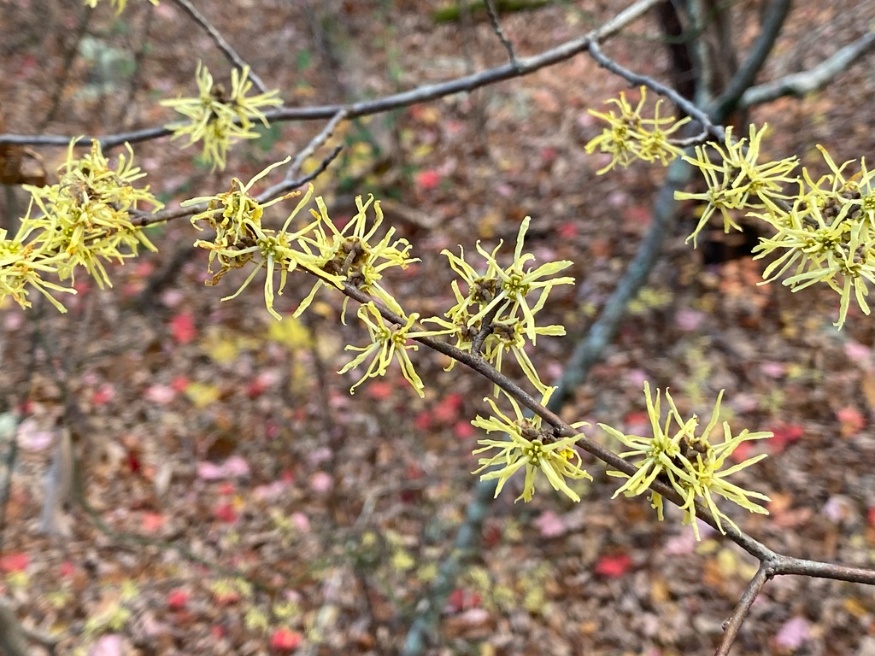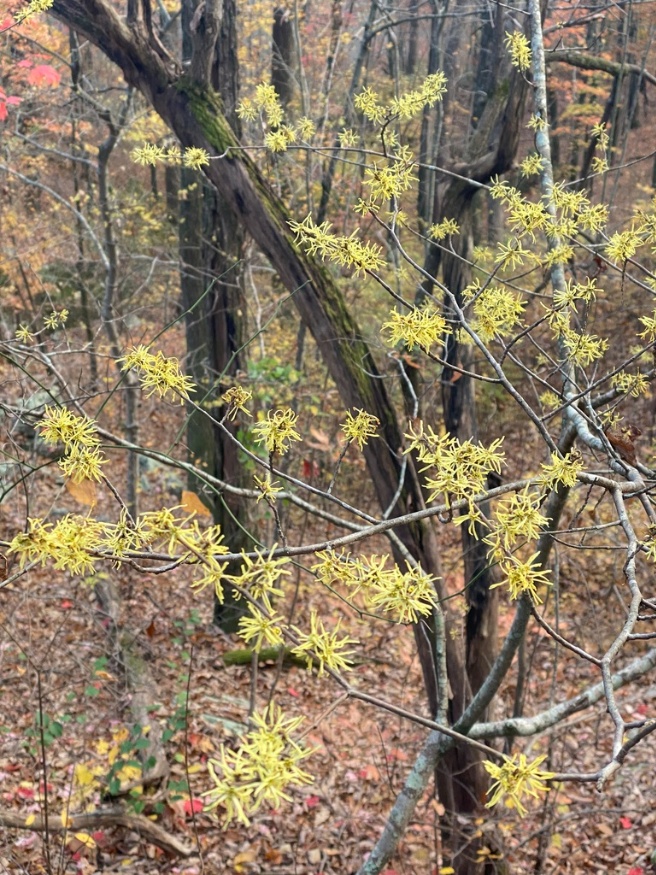American Witch Hazel

Other Names: fall witch hazel, fall-blooming witch hazel, witch Hazel, Common witchhazel, Virginian Witchhazel
Family: Hamamelidaceae Native to: Eastern North America
Hardy to zone: 3
Eco benefits: attracts birds
Natural habitat: understory, waters edge, inner forests, forest edge
Shapes: irregular, multi-stemmed
Height: 15-20ft
width: 15-20ft
Unique attractions: fall colour, flowers, winter interest
Tolerances: salt, deer resistant, black walnut
Common uses: hedge, specimen, naturalized plantings, shade garden, rain garden
Insects: japanese beetle
Light: full sun, partial shade, full shade
Soil: moist and fertile, well drained, tolerates heavy clay, ph adaptable, acid ph
Reproduction type: monoacious
Common witch hazel is a shrub or small tree native to the north and south portion of Eastern North America. It's found in woodlands, stream banks, and forest edges. Witch hazel usually grows no taller than 12 to 15 feet. The shape is Irregular, becoming sparser in the shade. The tree is noted for fall flower display and is the last of native shrubs to bloom.

Blooms occur from October to December and are most showy when planted in full sun. The colour is yellow, sometimes orange or red, and the flowers are pollinated by a moth.
Seed capsules develop over a long period of time. They first go dormant in the winter, then turn brown, then explode open in fall of the following year. One to two seeds per capsule are launched up to 30 feet. Seeds attract birds and the plant is a host for the spring azure butterfly.
The leaves are dark green on top, paler underneath, and are wavy or toothed around the edges. A pleasant yellow colour can occur in the fall.
Common with hazel is very tolerant of salt and a variety of soil conditions, provided the soil is moist. There are no major pest issues except occasional gall wasps or Japanese beetles.
The name witchhazel likely came from the name wicke meaning "lively" and wyck meaning "bend" because forked branches were used by Native Americans to dowse for underground water sources.
References
Missouri Botanical Garden (n.d.). Hamamelis virginiana. Retrieved from https://www.missouribotanicalgarden.org/PlantFinder/PlantFinderDetails.aspx?kempercode=a749
Plants For a Future. (n.d.). Hamamelis virginiana - L. Retrieved from https://pfaf.org/user/Plant.aspx?LatinName=Hamamelis+virginiana
Stritch, L. United States Department of Agriculture. (n.d.). American Witchhazel (Hamamelis virginiana L.). Retrieved from https://www.fs.fed.us/wildflowers/plant-of-the-week/hamamelis_virginiana.shtml
The Morton Arboretum. (n.d.). Common witch-hazel. Retrieved from https://www.mortonarb.org/trees-plants/tree-plant-descriptions/common-witch-hazel